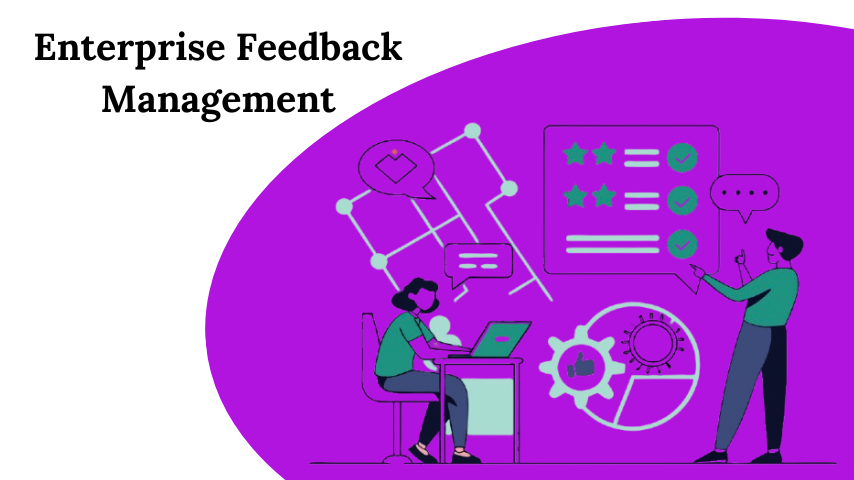In today’s competitive business landscape, effective enterprise feedback management is crucial for organizational growth, employee satisfaction, and continuous improvement. Understanding how to manage the feedback process can transform raw insights into actionable strategies that drive meaningful change within an organization.
Understanding the Importance of Feedback Management
Feedback is more than just a routine administrative task—it’s a strategic tool that can:
- Enhance organizational performance
- Improve employee engagement
- Drive customer satisfaction
- Identify potential areas of improvement
- Foster a culture of continuous learning and development
The Core Components of Enterprise Feedback Management
Successful feedback management relies on several key components:
- Structured Collection Methods
- Comprehensive Analysis
- Actionable Insights
- Continuous Improvement Cycle
Developing a Robust Feedback Management Strategy
1. Creating a Feedback-Friendly Culture
Establishing a culture that values feedback requires:
- Transparent communication
- Leadership commitment
- Psychological safety
- Open and non-judgmental environments
- Regular encouragement of feedback sharing
Best Practices for Cultivating Feedback Culture
- Lead by example
- Normalize feedback as a growth opportunity
- Provide multiple channels for feedback
- Recognize and appreciate those who provide constructive insights
2. Designing Effective Feedback Collection Methods
Multiple approaches can be employed in enterprise feedback management:
Quantitative Feedback Mechanisms
- Online surveys
- Rating scales
- Periodic performance reviews
- Net Promoter Score (NPS) assessments
Qualitative Feedback Mechanisms
- One-on-one interviews
- Focus groups
- Open-ended questionnaires
- Anonymous suggestion systems
3. Implementing Advanced Feedback Collection Technologies
Modern enterprise feedback management leverages technology:
- AI-powered sentiment analysis
- Real-time feedback platforms
- Integration with HR management systems
- Automated reporting tools
- Machine learning-driven insight generation
The Feedback Analysis Process
Key Steps in Feedback Analysis
- Data Aggregation
- Collect feedback from multiple sources
- Ensure data integrity and consistency
- Comprehensive Evaluation
- Identify patterns and trends
- Categorize feedback by department, theme, or impact
- Actionable Insights Development
- Translate raw data into strategic recommendations
- Prioritize areas requiring immediate attention
Techniques for Effective Feedback Analysis
- Statistical analysis
- Comparative benchmarking
- Trend identification
- Predictive modeling
- Cross-departmental correlation studies
Implementing Feedback-Driven Changes
Developing an Action Plan
- Prioritize insights based on potential impact
- Assign clear ownership for improvement initiatives
- Set measurable goals and timelines
- Create accountability mechanisms
- Establish follow-up and tracking processes
Monitoring and Evaluation
Continuously assess the impact of implemented changes through:
- Regular progress reviews
- Comparative performance metrics
- Ongoing feedback loops
- Adaptive strategy refinement
Challenges in Enterprise Feedback Management
Common Obstacles
- Resistance to change
- Insufficient technological infrastructure
- Lack of leadership support
- Inconsistent feedback processes
- Data privacy and security concerns
Mitigation Strategies
- Comprehensive change management
- Investment in robust technological solutions
- Leadership training and engagement
- Clear communication of feedback importance
- Implementing strong data protection protocols
Measuring the Success of Feedback Management
Key Performance Indicators (KPIs) to track:
- Feedback participation rates
- Employee satisfaction scores
- Customer experience improvements
- Operational efficiency gains
- Cost savings from implemented suggestions
Emerging Trends in Enterprise Feedback Management
- AI-powered predictive feedback analysis
- Real-time continuous feedback platforms
- Enhanced personalization of feedback mechanisms
- Greater emphasis on emotional intelligence
- Integration with broader organizational learning systems
Q1: How often should we collect feedback?
The frequency depends on your organizational needs, but quarterly or bi-annual comprehensive reviews with monthly pulse surveys are recommended.
Q2: What technologies are best for enterprise feedback management?
Look for platforms offering:
- Advanced analytics
- Integration capabilities
- User-friendly interfaces
- Scalable infrastructure
- Robust security features
Q3: How can we encourage honest feedback?
Ensure:
- Anonymity options
- Non-punitive environments
- Clear communication of feedback’s purpose
- Visible action on provided insights
Q4: What are the legal considerations in feedback management?
Consider:
- Data protection regulations
- Privacy laws
- Consent mechanisms
- Transparent data usage policies
Q5:What is enterprise feedback management?
Enterprise feedback management (EFM) refers to systems and practices that streamline the collection, analysis, and action of feedback at an organizational scale. It integrates multiple feedback channels, making it easier to derive insights and drive improvements.
Q6:How can I encourage employees to share honest feedback?
Create a safe and supportive environment. Offer anonymity, demonstrate that feedback leads to action, and reward contributions to foster trust.
Q7:Why is regular feedback collection important?
Regular feedback helps organizations stay aligned with evolving needs, identify trends early, and maintain a culture of continuous improvement.
Q8:What tools can simplify feedback management?
Tools like Qualtrics, SurveyMonkey, and enterprise feedback management platforms can automate and enhance the feedback process.
Q9:How do I act on negative feedback?
Address negative feedback by acknowledging concerns, identifying root causes, and implementing corrective actions. Communicate your steps to the person or group that shared the feedback.
Q10:What are the benefits of centralized feedback systems?
Centralized systems, such as EFM platforms, improve efficiency, reduce redundancy, and provide a unified view of feedback across various channels.
Conclusion
Enterprise feedback management is a dynamic, strategic process that requires continuous refinement, technological integration, and a commitment to organizational learning. By developing a comprehensive, technology-enabled approach, organizations can transform feedback from a simple administrative task into a powerful driver of innovation, engagement, and sustainable growth.
The most successful enterprises view feedback not as a mere collection of opinions, but as a strategic asset that fuels continuous improvement and competitive advantage.
Final Takeaway: Embrace feedback as a catalyst for organizational transformation.
